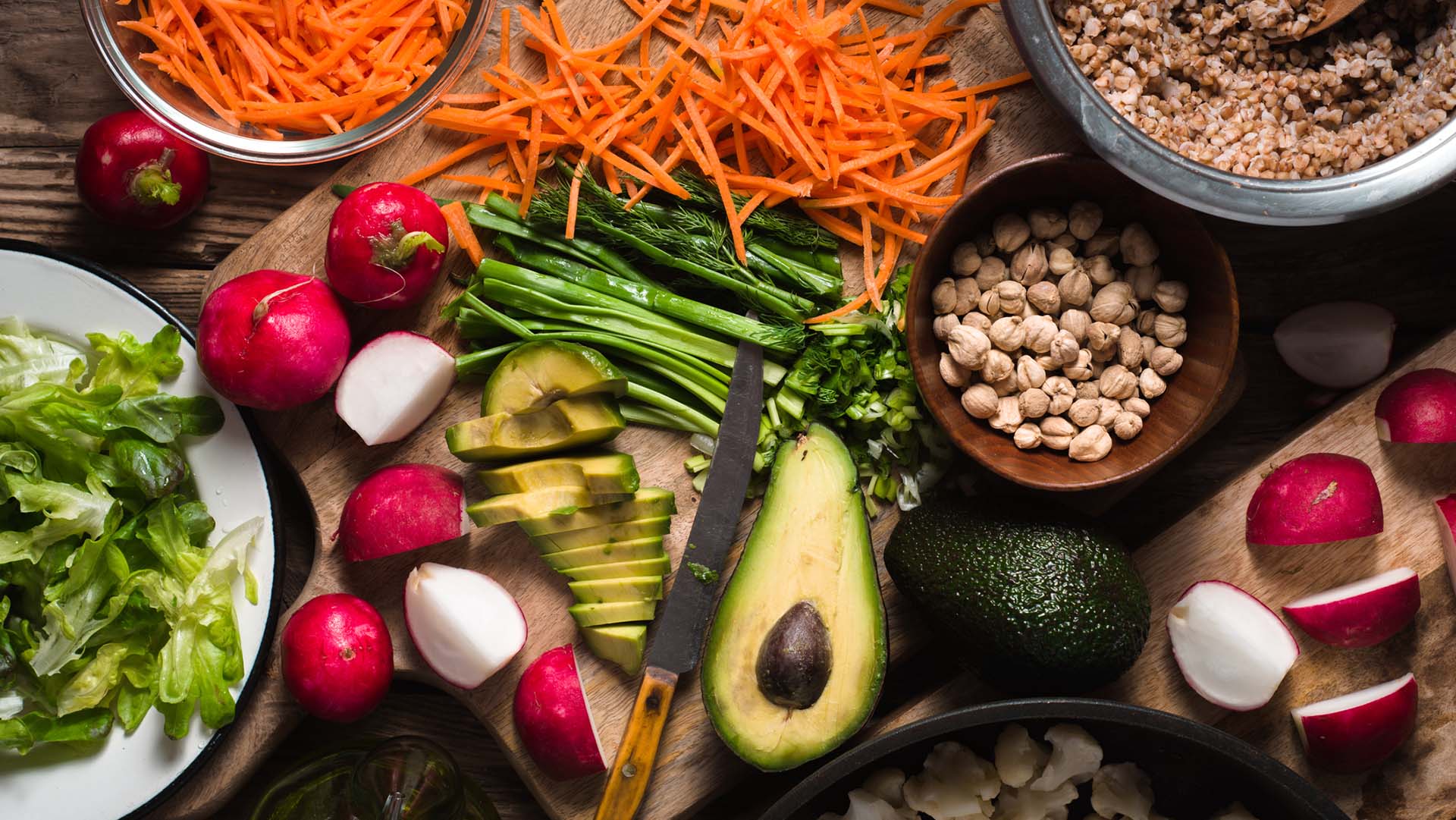-
1. Eat mindfully
I know this sounds like hippie-speak but eating slowly and concentrating on the food in front of you will help you eat better. For a start, slowing down the rate of eating and putting your utensils down between mouthfuls forces you to listen to your body’s signals of hunger and fullness. Chewing your food starts the digestion process as your saliva contains the enzyme amylase which begins the breakdown of starches in the mouth. Chewing well reduces and grinds food into a “slurry” that makes digestion easier.
2. Forget dieting – eat for life
Nutrition is not about dropping a dress size. It’s about eating well to nourish your body. In other words, a nutrient-dense diet.
3. Listen to your stomach
Learn to stop when you’re at a comfortable 5 out of 10 full. Not an over-stuffed 7 or 8 out of 10 as happens often if we eat out all the time. You can easily rate your fullness level so you can work out a comfortable point of fullness (satiety) to stop eating. Best of all, this works with ANY diet or program.
4. Keep portions moderate
Steer clear of huge portion sizes or seconds as these are a key cause of obesity. The bigger the portion in front of you, the more you tend to eat – and that’s been proven through research[1].
- Serve meals on smaller sized plates and bowls. Use small – not oversized – spoons.
- Measure or weigh your portions of rice, pasta or meat once so you know what a standard size serve looks like.
- When you’re serving, take notice of how much you serving – is it the suggested half a cup OR really 1 1/2 cups.
Healthy eating made easy

-
5. Drink more water
Make plain water your default drink. Water is the best thirst quencher, yet most of us don’t drink enough. The body needs about 2 litres (8 glasses) of water each day. Carry a bottle of water with you in the car and have one on your desk at work.
Juices are fat-free and healthy but they are fruit in concentrated form - high in natural sugars, low in fibre, high in kilojoules/calories and easy to over-consume. You couldn't chomp your way through 2 or 3 oranges in a minute but I bet you could easily drink a glass of juice.
6. Eat a salad a day
I’m big on salads because they are easy to pull together, use up bits hanging around in your fridge and can be made up ahead (needing only the dressing poured over before serving). Plus they give you food in raw state which means you get your vitamin C, folate and B1 (which are all heat-sensitive) and require chewing.
7. Watch the salt
We eat twice as much salt as we should. Stop sprinkling salt over your food without tasting it, and start buying reduced-salt products such as stock. Boost the flavour with fresh herbs, garlic, chilli and citrus zest.
8. Watch the sugar
Feeding that sweet tooth? Too much sugar adds unwanted kilojoules (calories) and supplies no fibre, vitamins or minerals. A spread of jam on your toast or sugar in yoghurt is OK, but limit your consumption of sugary soft drinks, juices, lollies, chocolate, muffins, pastries and ice creams.
9. Eat smart carbohydrates
Say no to refined carbs like white rice. Go for wholegrains, high-fibre or low GI carbs such as dense grainy breads, brown rice, oats, pearl barley, wholegrain breakfast cereals and legumes. This means they are absorbed more slowly – your body is doing the work, not the food factory!
10. Use technology to help
Buy a Fitbit or use apps to track your steps, your sleep and fitness level. I don’t feel you need to enter everything you put in your mouth into an app – many dishes are hard to classify such as Chinese stir-fries. And don’t sit for hours looking at a small screen or smart phone! Sitting is the new smoking. So have a tech-detox on the weekend or when you’re away.
How to plate up for health
Finally, always remember to use this handy rule of thumb to get the proportions right on your dinner plate. Fill:
- half your plate with veg or salad (make these the hero of the meal – think eggplant or stuffed capsicum)
- a quarter of your plate with protein
- a quarter of your plate with whole grains or starchy veg like gold sweet potato.
And don’t forget to choose a variety of colours for your vegetables – serve some orange, yellow, red, green and blue hues.
Looking for more nutritional advice and information? Catherine Saxelby's updated book the Food and Nutrition Companion is now out (Hardie Grant Books, $34.99).
1. Wansink, Kim, Bad Popcorn in Big Buckets: Portion Size Can Influence Intake as Much as Taste, Journal of Nutrition Education and Behaviour, 2005
-
Comforting chicken noodle soup
Packed with anti-inflammatory ingredients including leek, garlic and ginger, this chicken noodle soup is hearty, full of goodness and great for any night of the week.
-
Mental fitness explained
Just as you work to strengthen your body, your mental health deserves attention and exercise too.
-
Signs it's time to visit the dentist
Nobody wants to go. But there are good reasons to – promise.
-
The link between stress, anxiety and jaw pain
Physiotherapist Michael Chan explains how stress and anxiety can cause jaw pain, and how to help get some relief.
-
Peach salsa recipe
Zesty and unusual peach salsa recipe
-
Pineapple gingerbread crumble recipe
A summer riff on a winter classic.
Subscribe to receive the best from Live Better every week. Healthy recipes, exercise tips and activities, offers and promotions – everything to help you eat, move and feel better.
By clicking sign up I understand and agree to Medibank's privacy policy




.jpg)

